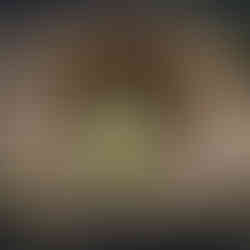Sick building syndrome.
- KAZIMIERZ ZERDKA BAXTER

- Feb 11, 2020
- 3 min read
Updated: Feb 25, 2020
What is sick building syndrome?
The sick building syndrome is not known to the average person but everyone should know something about it, because the effects of staying in such a house are not pleasant and can lead to health complications and sometimes death, so this term should be taken very seriously.
The residents of the building experience various health symptoms, without any specific reason, they begin to get sick during the time spent in the building. If the resident of the house does not stay in it for at least 3 days and elsewhere he will feel better and the disease passes.After returning home, you will feel worse and your illness will return.
In this case, you should immediately intervene with a doctor and call human a to examine the house for moisture and mold.
The location moisture and mold can vary. From this point on, thorough home examinations should be carried out. The sick building syndrome has been growing in recent years and this is due to the building's operation and maintenance not being in line with its original design or conflicting ones recommended by specialists.
A delayed bomb.
Residents living in the building with the sick building syndrome complain of symptoms associated with acute discomfort, e.g.
Headache, eye, nose or throat irritation, dry cough, dry or itchy skin, dizziness and nausea, difficulty concentrating, fatigue and sensitivity to smells.
The cause of the above symptoms is not known or understood by unaware tenants. Residents are not aware that they live with a delayed ignition bomb.
Possible causes
Many factors can contribute to a sick building syndrome and therefore it is difficult to determine and indicate the cause, specialized tests and examinations should be carried out, the diagnosis cannot be stated theoretically.

Insufficient ventilation:
This means insufficient air exchange in the rooms, which causes inadequate circulation.
Biological pollutants:
Bacteria, molds, pollen and viruses are types of biological contaminants. Sometimes insects, birds or rodents droppings can also be a source of biological pollution.
It should be remembered that such contaminants reproduce in humid conditions,
Physical symptoms associated with biological contamination include coughing, tightness of the chest, fever, chills, myalgia and allergic reactions such as mucosal irritation and upper respiratory tract congestion.

Possible solutions to the sick building syndrome.
Whether it could be bad air?
To destroy a sick building syndrome, you must first perform a detailed indoor air quality test. This requires identifying the causes and actions of the devices. It starts with gathering information on the following topics:
actions of all residents
ventilation system
possible and visible impurities
After obtaining information, tests can be conducted to assess the level and types of chemical and biological contaminants.
Molds are serious biological pollutants that seriously affect indoor air quality.
Molds can cause many health symptoms, such as allergies, coughs, colds, irritation, nausea, fatigue and fever.
The first and further tests reveal the identity of the mold. This can help to draw conclusions about the factors that contribute to sick building syndrome. A strategic solution can be developed based on all the information and evidence collected.
The basic approach would be to remove the source of pollution and purify the air.

Proper ventilation and adequate air circulation can help eliminate and certainly minimize the cause of sick building syndrome.
An effective interview between people living in the building, building management and maintenance staff can also help find the causes and consequences of a sick building team.
Awareness about indoor air quality problems can help overcome sick building syndrome and I am convinced that it will be preventive for tenants from unforeseen diseases.























Comments